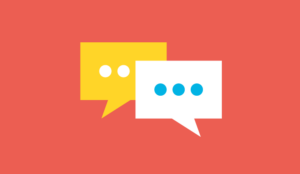Businesses that want to deliver an omnichannel experience require a laser focus on the customer. Anything less will result in customers noticing a lack of dedicated resources, causing them to be unwilling to digitally interact with the contact centre.
This is especially true for Millennials, the age range for those born from 1980 to the mid-90s, who have grown up with a digital experience and have had access to computers at a young age.
So why then, if something goes awry, would Millennials turn to a non-digital channel for customer service?
We know that for complex or financially-related transactions, phone support is preferred, but for more basic functions, online chat appears to be the preferred choice for Millennials, whether through a social media channel, chat services, or on your company’s website.
Advanced contact centre technologies, savvy agents and optimised quality assurance programs will increase the likelihood that companies will consistently deliver on brand promises and increase customer satisfaction and engagement for life for the brand.
Your Estimated Wait Time Is Infinity
Traditional methods of customer service; i.e., humans calling from their phones, means that many requests go unanswered.
Not only is traditional customer service a maze of human misunderstandings, it can quickly become an impersonal game of hot potato – being passed from one operator to the next, transferred from department to department, being asked to repeat your issue, and in between being left endlessly on hold to wonder about the meaning of life and what you ever did to deserve this.
The traditional method of customer service doesn’t work well for the businesses trying to reach the vast population of Millennials, a group that now surpasses Baby Boomers as North America’s largest generation.
No Do-Overs
Everybody knows that customer service is crucial in ensuring the success of your business. A whopping 91% of unsatisfied customers will not return to your business after a poor experience with customer service, and a customer is 4 times more likely to defect to a competitor if the problem is service related than if it were price or product related. So getting it right the first time is essential.
Customer Peacekeeping
While live chat still can’t handle every customer service concern, it can certainly provide a more immediate solution, letting the customer know their issue has been noted and assuring them it will be resolved in a timely fashion.
The chances of losing a customer drop dramatically when you have a customer chat service to tend to each user in real time.
Ghosting on Customer Complaints
What about those who are afraid to rock the boat? 96% of unhappy customers don’t complain, 91% of which will simply leave and never come back.
In the age of avoidance and introversion, what about those who wouldn’t go to the trouble of dialing a number, or taking the time to wait on hold for a customer service representative to air their small grievances? How many quietly ghost your business with you left never knowing why?
In these instances, live chat can be not only more approachable but easier and less threatening to navigate.
BI Intelligence reports that the top four messaging apps, Facebook Messenger, WhatsApp, WeChat and Viber, have surpassed the top four social networks (Instagram, Twitter, Snapchat, and Facebook) in total number of monthly active users.
Therefore, businesses should focus on where their customers are likely to spend the most time and feel the most comfortable sharing information.
What About Bots?
79% of respondents of a survey by the mobile app Retale report that their chatbot experiences were positive or neutral, but there are concerns and frustrations among users.
55% of Millennial users reported that the accuracy rate could be improved, and 28% said the ability to have more natural-sounding conversations could be upgraded.
Until technology can catch up, keeping the human touch behind customer service is the best approach, but streamlining with live chat services is cost effective and preferable to reach millennials where they already are.
Chat Saves Sanity and Money
Being a big hit with Millennials means a vast opportunity for brands to directly interact one on one with these users – an option that isn’t scalable with a staff of traditional customer service representatives.
Millennials are a bit of a paradox in that they desire efficient technology often over human service, but at the same time, they crave individual personalised experiences. An always available customer service agent can deliver both via live chat.
It’s early days with room for improvement, but with Millennials opting for even imperfect technology over fallible traditional help, there’s room to grow and substantial savings to be had by upgrading the customer service experience with live chat.
The potential savings on customer loyalty, plus cost on the business end is undeniable. Live chat simply saves call centres money. Agents can handle multiple chats at once, chat software is lower maintenance, and contact centre managers have an easier way to create ‘always on’ shifts around the world.
FOMO: Right Place Right Time
Call them crazy, but there’s something about being raised with efficient, responsive technology that leaves little room and patience for long wait times with this demographic.
Not only are Millennials early adopters, they’re also the most connected generation. 66% of Millennials check their smartphones before getting out of bed each morning and 83% never power them off.
So being where your customer already is – aka on page and in hand (mobile) – means satisfying them to infinity and beyond. (Millennials love Toy Story)
This blog post has been re-published by kind permission of Scorebuddy – View the Original Article
For more information about Scorebuddy - visit the Scorebuddy Website
Call Centre Helper is not responsible for the content of these guest blog posts. The opinions expressed in this article are those of the author, and do not necessarily reflect those of Call Centre Helper.
Author: Scorebuddy
Published On: 6th Jun 2023 - Last modified: 9th Dec 2024
Read more about - Guest Blogs, Scorebuddy






 Scorebuddy is quality assurance solution for scoring customer service calls, emails and web chat. It is a dedicated, stand-alone staff scoring system based in the cloud, requiring no integration.
Scorebuddy is quality assurance solution for scoring customer service calls, emails and web chat. It is a dedicated, stand-alone staff scoring system based in the cloud, requiring no integration. 































